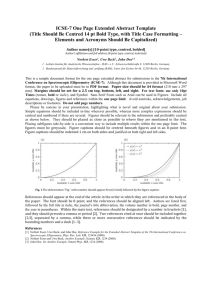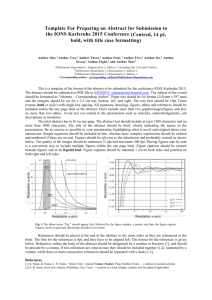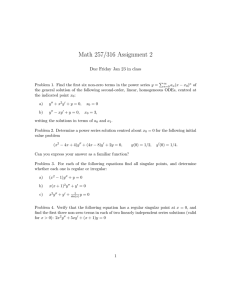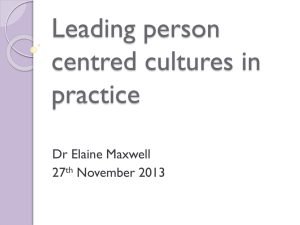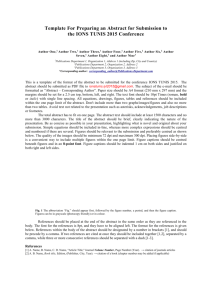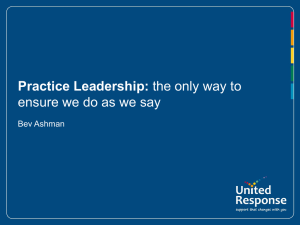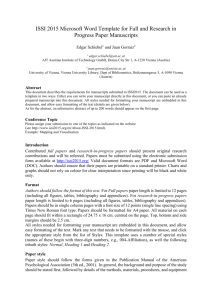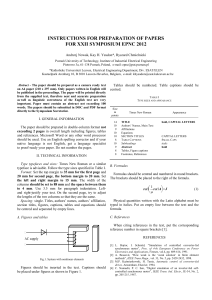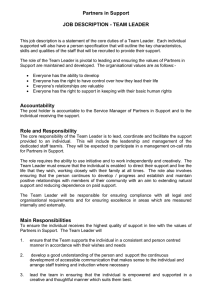to get the file - CLEO Europe 2015
advertisement
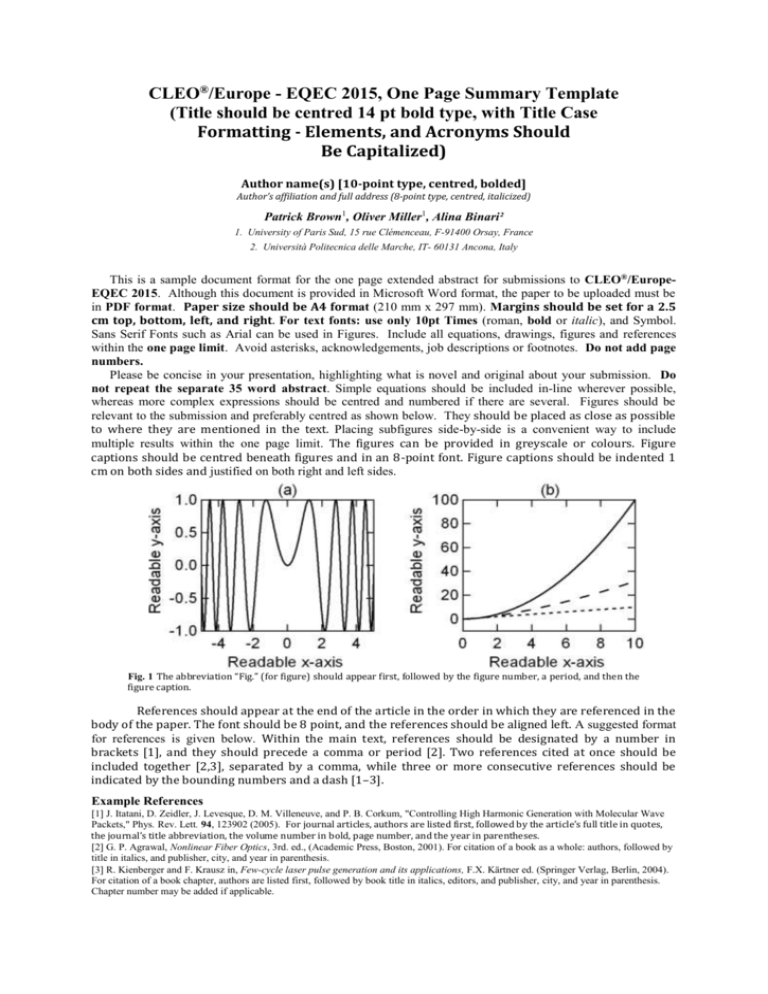
CLEO®/Europe - EQEC 2015, One Page Summary Template (Title should be centred 14 pt bold type, with Title Case Formatting - Elements, and Acronyms Should Be Capitalized) Author name(s) [10-point type, centred, bolded] Author’s affiliation and full address (8-point type, centred, italicized) Patrick Brown1, Oliver Miller1, Alina Binari² 1. University of Paris Sud, 15 rue Clémenceau, F-91400 Orsay, France 2. Università Politecnica delle Marche, IT- 60131 Ancona, Italy This is a sample document format for the one page extended abstract for submissions to CLEO®/EuropeEQEC 2015. Although this document is provided in Microsoft Word format, the paper to be uploaded must be in PDF format. Paper size should be A4 format (210 mm x 297 mm). Margins should be set for a 2.5 cm top, bottom, left, and right. For text fonts: use only 10pt Times (roman, bold or italic), and Symbol. Sans Serif Fonts such as Arial can be used in Figures. Include all equations, drawings, figures and references within the one page limit. Avoid asterisks, acknowledgements, job descriptions or footnotes. Do not add page numbers. Please be concise in your presentation, highlighting what is novel and original about your submission. Do not repeat the separate 35 word abstract. Simple equations should be included in-line wherever possible, whereas more complex expressions should be centred and numbered if there are several. Figures should be relevant to the submission and preferably centred as shown below. They should be placed as close as possible to where they are mentioned in the text. Placing subfigures side-by-side is a convenient way to include multiple results within the one page limit. The figures can be provided in greyscale or colours. Figure captions should be centred beneath figures and in an 8-point font. Figure captions should be indented 1 cm on both sides and justified on both right and left sides. Fig. 1 The abbreviation “Fig.” (for figure) should appear first, followed by the figure number, a period, and then the figure caption. References should appear at the end of the article in the order in which they are referenced in the body of the paper. The font should be 8 point, and the references should be aligned left. A suggested format for references is given below. Within the main text, references should be designated by a number in brackets [1], and they should precede a comma or period [2]. Two references cited at once should be included together [2,3], separated by a comma, while three or more consecutive references should be indicated by the bounding numbers and a dash [1–3]. Example References 1 J. Itatani, D. Zeidler, J. Levesque, D. M. Villeneuve, and P. B. Corkum, "Controlling High Harmonic Generation with Molecular Wave Packets," Phys. Rev. Lett. 94, 123902 (2005). For journal articles, authors are listed first, followed by the article’s full title in quotes, the journal’s title abbreviation, the volume number in bold, page number, and the year in parentheses. 2 G. P. Agrawal, Nonlinear Fiber Optics, 3rd. ed., (Academic Press, Boston, 2001). For citation of a book as a whole: authors, followed by title in italics, and publisher, city, and year in parenthesis. 3 R. Kienberger and F. Krausz in, Few-cycle laser pulse generation and its applications, F.X. Kärtner ed. (Springer Verlag, Berlin, 2004). For citation of a book chapter, authors are listed first, followed by book title in italics, editors, and publisher, city, and year in parenthesis. Chapter number may be added if applicable.
